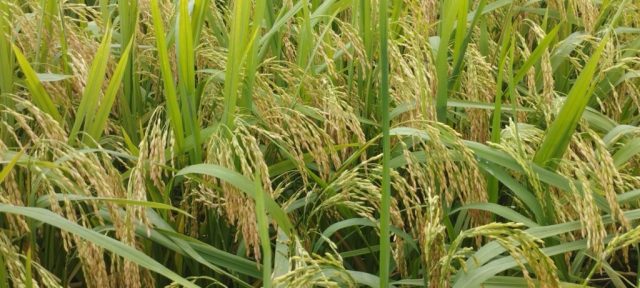Multi-nutrient 3-in-1 rice for enhanced health and nutrition benefits
- From
-
Published on
23.07.25
- Impact Area

IRRI has developed 3-in-1 rice through gene stacking to address vitamin A, iron, and zinc deficiencies. This biofortified rice offers a practical, low-cost solution to malnutrition without changing diets or farming practices.
by B.P. Mallikarjuna Swamy, Inez H. Slamet-Loedin , Kurniawan R. Trijatmiko, Amery Amparado , Mercy Samia, Raul Boncodin, Ma. Aileen Garcia, and Russell Reinke
Micronutrient deficiencies, often called hidden hunger, affect more than two billion people around the world. Such deficiencies lead to anemia, weakened immunity, stunting, blindness in children, and increased risk of diseases. Women, children and elderly population in low-income countries are highly vulnerable to this form of malnutrition.
These deficiencies often occur together, with vitamin A, iron, and zinc deficiencies commonly found in the same populations. Since zinc is vital for insulin production and glucose metabolism, its deficiency has been associated with an increased risk of diabetes.
In Asia, rice is the most common food on the table, but current rice varieties in their milled form do not provide all of the essential nutrients that people need to stay healthy. Millions of families rely almost entirely on rice for their daily meals, making rice an ideal vehicle to improve nutrition.
“Deficiencies in iron, zinc, and pro-vitamin A in rice-based diets continue to cause high morbidity and mortality,” said Gates Foundation Senior Officer Lawrence Kent.
“The development of healthier rice varieties offers a promising solution, particularly in rural areas where people tend to eat the rice that they or their neighbors cultivate, which is not industrially fortified,” he added.
Related news
-

Positioning healthier rice varieties in Odisha for market demand and farmer income
International Rice Research Institute (IRRI)28.10.25-
Nutrition
-
Poverty reduction, livelihoods & jobs
In western Odisha, farmer groups and women’s self-help groups are taking the lead in bringing…
Read more -
-

SOILutions for Security: CGIAR at the 2025 Borlaug Dialogue
Multifunctional Landscapes Science Program22.10.25-
Biodiversity
-
Environmental health
-
Environmental health & biodiversity
-
Food security
-
Nutrition
From October 21–23, CGIAR will join global partners in Des Moines, Iowa for the 2025…
Read more -
-

New insights on how rainfall patterns influence arsenic in rice
International Rice Research Institute (IRRI)14.10.25-
Nutrition
By Bushra Humaira Sadaf Arsenic in rice has long been linked to contaminated irrigation water,…
Read more -
